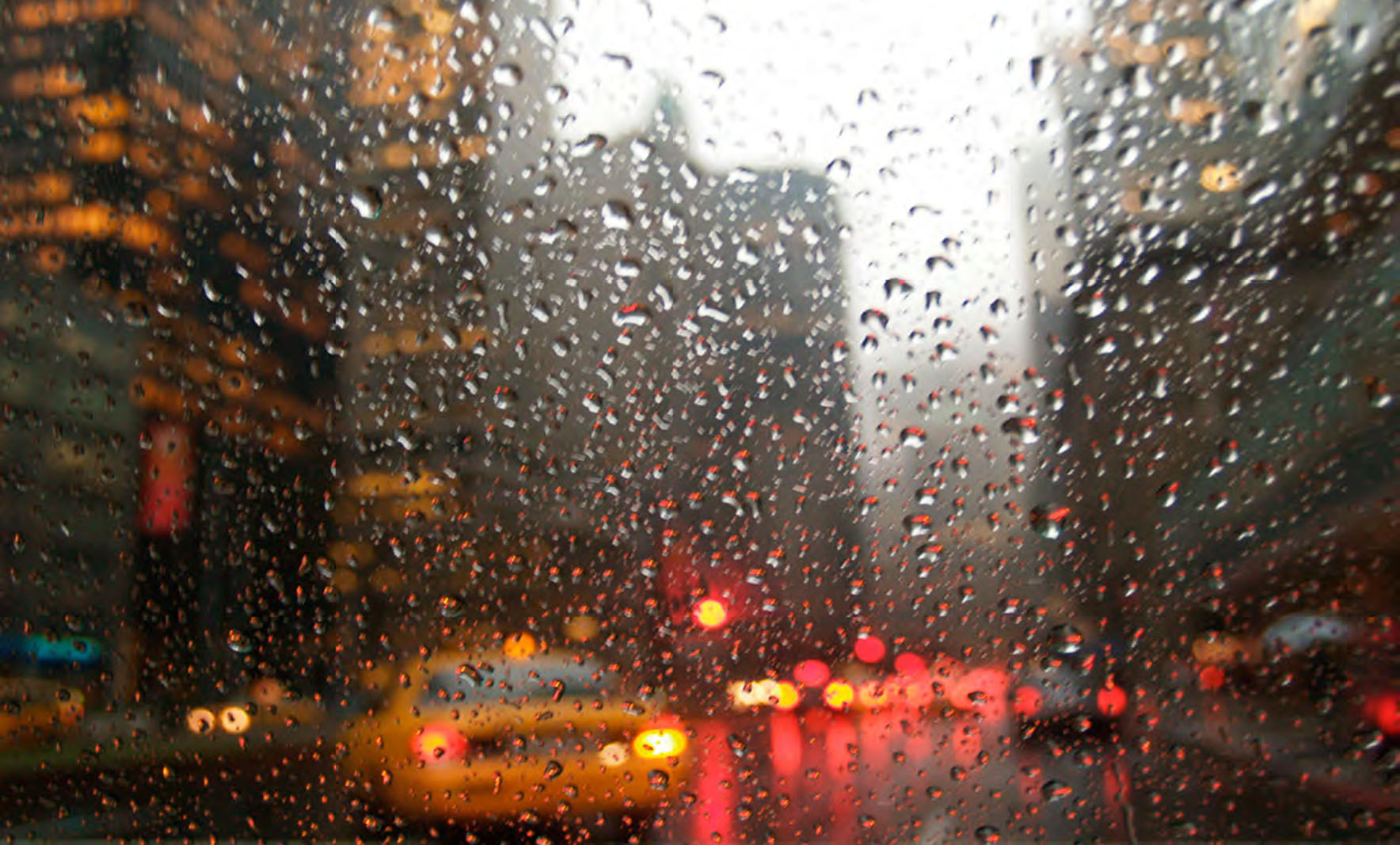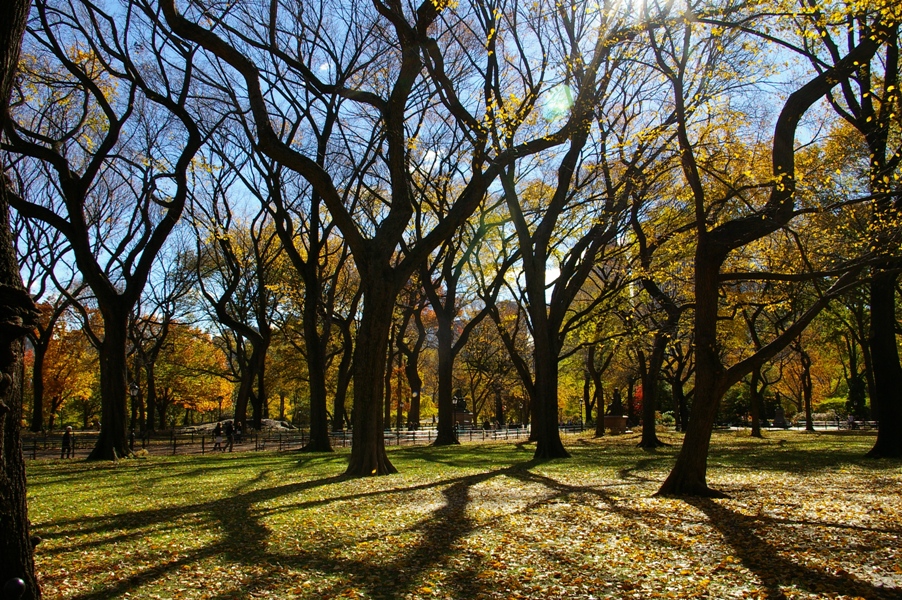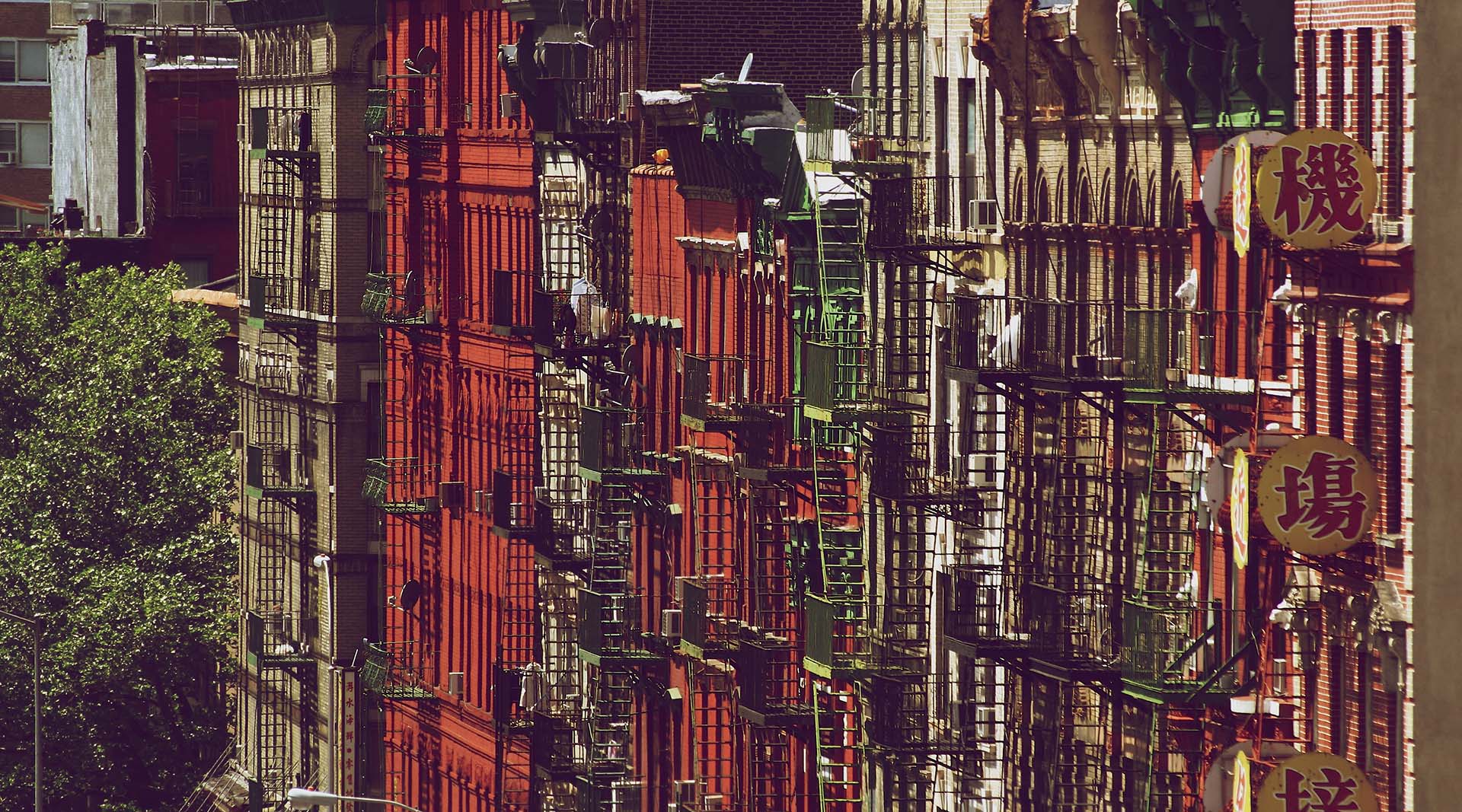NYC: Green Urban Jungle?
For the first time in human history, more than half of us live in cities — thriving metropolitan environments where millions of people go about their everyday lives. A prime example of these urban jungles is New York City, the most populous city in the United States and 19th largest in the world. Located on a large natural harbor habitat, the five boroughs of The Bronx, Brooklyn, Manhattan, Queens and Staten Island are home to 8.2 million people who thrive in an ecosystem of metal and concrete, mixed in with natural parks and waterways.
New York City
“New York is where the future comes to rehearse,” stated the late-Ed Koch, three-time mayor of New York (1978-89). But several issues pose a threat to this iconic city — a growing population, ageing infrastructure and climate change. To address them, current Mayor Michael Bloomberg created the Office of Long-Term Planning and Sustainability (OLTPS) in 2006 and released the PlaNYC 2030 as “an unprecedented effort […] to prepare the city for one million more residents, strengthen our economy, combat climate change, and enhance the quality of life for all New Yorkers”. The OLTPS is in charge of coordinating all City agencies for the development and implementation of the Plan.
We cannot solve the problems associated with climate change alone here in New York City, but I think it’s fair to say we can lead the way
Michael Bloomberg, Mayor of New York City
PlaNYC 2030 brings the numerous challenges and opportunities of New York into a comprehensive action-oriented policy-line. The city’s population is expected to reach 9 million by 2030 with around 50 million visitors every year. This growth must be properly equilibrated to avoid erratic development that will exert a serious burden on public infrastructure. Purely statistical additions of housing units and miles of subway rails will not do. The recognition that opportunity lies in both quantitative growth and qualitative essence is at the forefront of the Plan, which aims to prove once again that when the world changes, New York leads that change.
In the Driver’s Seat
At the forefront of the mobility challenge is the subway system, which has more than 1,000 km of track and in 2011 provided 1.64 billion rides, making it the 7th busiest rapid rail transit system in the world. However, the New York Transit Authority announced in 2008 that several subway lines have already reached their limits in terms of passenger load and frequency of the trains and the only new line in construction will begin operation in 2016.

To address these challenges, New York aims to improve and expand alternative and sustainable modes of transport. The NYC bus service provides 2.3 million rides a day, and in some neighborhoods, such as the Bronx, busses are the only link to jobs, shopping and recreation. For this reason, the Metropolitan Transit Authority (MTA) launched the first Select Bus Service (SBS) in the Bronx in 2008 and has since expanded the program to Manhattan and Queens. The SBS system makes travelling by bus more attractive and comfortable to customers by allowing off-board fare collection, designated bus lanes and signal prioritization. This last technological innovation makes it possible for traffic lights to recognize approaching buses and allow them to pass through a green light without having to wait. The first SBS line showed a 20% improvement in service and 10% increase in ridership, making it an attractive alternative to other means of transport as well as a step up in quality and speed.
Other initiatives are also economically-/environmentally-oriented. For example, car-sharing can be an efficient and convenient option for the 5.3 million car-owners, most of whom use their vehicle infrequently. Private initiatives already provide the opportunity for people to share a vehicle whenever needed. Another new policy aims to expand taxi and for-hire car services, which move 1.2 million people around every day. Almost all New York taxis currently operate in lower and central Manhattan and the City’s airports, making it nearly impossible for the residents of the other boroughs to use them. By expanding the “yellow-caliber” taxi service beyond Manhattan, many people would be able to take advantage of the system and conduct their daily business without owning a car.
Water Ways and Worries
New York City certainly is a testament that water is the source of life. The city has a single agency of 6,000 employees — the Department of Environmental Protection (DEC) — charged with the task to monitor the water system. Every day, more than 3.8 billion liters of water travel from upstate New York to the City and provide its residents with an abundant and high-quality source of drinkable tap water. But these pure water sources are now being threatened by human activity such as hydraulic fracturing (or fracking) for natural gas, which could potentially pollute 90% of the city’s daily water supply.
If action is not taken to preserve these natural resources, New York will have to build a $10 billion filtration plant, which would cost another $10 million a year to operate, and result in a 30% price increase for ordinary citizens. To avoid this scenario, $462 million were invested in a Watershed Protection Program, which combines land acquisition, environmental protection and economic development along the transit routes of NYC’s water, enlisting business, towns and organizations to cooperate. Encouraging sustainable farming techniques, such as limiting fertilizer use, and treating waste products and industrial chemicals, New York is actively seeking to protect its fresh water sources.
The Plan NYC also outlines steps to increase water conservation. Recent low-cost refurbishments to government buildings show that it is possible to reduce potable water consumption by 20-80%. In 2011, a manual was released to show how building designs can lead to water conservation. For example, a simple replacement of old toilet systems can lead to a five-time reduction of water usage in the city. The DEC is also currently developing a report with recommendations on how to re-use rainwater or waste-water from showers and sinks in a manner that will not threaten public health and ensure long-term sustainability.
Further downstream, the Department of Environmental Protection launched a “leak notification program” in 2011 to inform citizens if their water consumption had suddenly spiked, indicating a leak. This program is reported to have saved $26 million in 2012 by detecting more than 31,600 leaks and initiating repairs on time. The OLTPS has identified segments totaling 1,600 km (out of 10,800km) of water pipes that are more than a century old and need to be replaced. This is also an opportunity for new technology to be installed which will increase operational efficiency. After decades, or in some cases more than a century of constant operation, the water distribution network needs new tubes.
All the Pretty Lights
In 1882, Thomas Edison created the first central power plant on Pearl Street, New York. Since then, electricity has driven NYC’s expansion and given shape to iconic sites like Times Square and Broadway and Wall Street. However, when Hurricane Sandy caused a 4 meter high tide to hit Manhattan, the water drained into the “spaghetti network” of electricity cables running underground. After thousands of New Yorkers were left without power, employees of the electricity utility company had to cramp into the tunnels under Manhattan and check each cable, transformer and switch for damages or malfunctions, sector by sector.
Unlike the water system, there is no single agency to oversee the electricity, gas and steam distribution of New York City. These systems are investor-owned and regulated by the state and federal governments, leaving NYC with little say in matters of energy. The municipal government has an interest in ensuring that New Yorkers have access to clean, reliable and affordable energy, which drove to the creation of the New York City Energy Planning Board that aims to steer policy and encourage renewable energy investment, effective incentive programs and shared data collection and management.
The City Council did pass four laws in December 2009 targeting energy efficiency upgrades that will impact New York’s 16,000 largest public and private properties which comprise half of the built area in New York City. Since energy use in buildings accounts for 75% of New York’s carbon emissions and 94% of its electricity use, these new regulatory procedures for the retrofitting of old buildings are set to create 18,000 jobs, save citizens $750 million per year and reduce emissions by 5% by 2030. Efforts are also underway to inform households of the benefits of energy efficiency and to initiate a competition for the most efficient neighborhood in order to promote the idea in small and medium-sized buildings.

A greater challenge lies at the other end of the energy system — the point of power generation. New York’s electricity supply is cleaner than the national average, with most in-city power plants operating on gas and imports of nuclear and hydro-power. But NYC also has one of the highest wholesale prices of electricity in the United States. Further complications will arise with the planned shut-down of the Indian Point nuclear power plant without a viable and clean replacement option. New York City actively supports the continued operation of Indian Point to avoid increasing prices, decreasing air quality, and turning the 30% reduction in emissions target into a mirage.
Key Facts
1,600 km (out of 10,800km) of water pipes in NYC are more than a century old and need to be replaced.
Over 97% of the 127 initiatives in PlaNYC were launched within one-year of its release and almost two-thirds of its 2009 milestones were achieved or mostly achieved.
The updated plan has 132 initiatives and more than 400 specific milestones for December 31, 2013.
NYC is also in favor of refurbishing old power stations to allow greater efficiency in burned fuel. One of the more innovative projects includes a plan to increase renewable energy production, which has already doubled from 2007 to 2011 to 53,000 megawatts (MW). An additional 60 MW is to be added through a $125 million program to foster solar photovoltaic installations by 2015. The combined generation of heat and power, known as cogeneration, is in the spotlight, with the possible development of 800 MW of clean energy through the capture and use of heat as a byproduct of electricity production and reuse for heating and cooling. In the end, 60% of New Yorkers stated that they are willing to purchase ‘green’ energy at a premium and in NYC the consumer drives the market.
Facing the Future
After Hurricane Sandy, Mayor Bloomberg declared that “the biggest challenge we face is adapting our city to the risks associated with climate change”. With the urban jungles of the world contributing approximately 80% of the world’s greenhouse gas emissions, NYC contributed 54 million metric tons of CO2 in 2010, or 1.7 tons every second; roughly the same amount as Switzerland. PlaNYC 2030 aims to reduce emissions by 30% before 2030 in comparison with 2005. In 2011, OLTPS reports already showed a 12% reduction from the baseline. The plan is working, and exceeding expectations.

More concrete actions to reduce greenhouse gas emissions are also underway. Incorporating sustainability into the design and maintenance of all public spaces, the aim is to create a network of green corridors and plant one million trees in addition to the existing 5.2 million. In the course of improvements to the water system, some major aims include the sustainable use of storm-water, an increase in the operational efficiency of the water supply with new technology, and promotion of water conservation. At the top of the list are improvements of energy efficiency of buildings, fostering of the renewable energy market of the city while ensuring the security of power delivery, and easing the adoption of electric vehicles. These actions will decrease the carbon-footprint of the city substantially and therefore increase air quality as well.
New York sits at the edge: like Istanbul or Mumbai, its distinctive appeal lies precisely in its cankerous relationship to the metropolitan territory beyond. It looks outward, and is thus attractive to people who would not feel comfortable further inland. It has never been American in the way that Paris is French: New York has always been about something else as well.
Tony Judt, The Memory Chalet, London: Vintage Books, 2011, p. 196.
There is of course more to climate change than emissions. NYC has over 830 km of coastline and has always been at extensive risk from heat waves, snow storms, hurricanes and flooding. Mayor Bloomberg has set out to update codes and standards in order to make New York City more resilient. Better zoning regulations will permit buildings located in areas under greater threat of flood to be built or retrofitted to withstand potential disasters. Such higher standards are already required of critical public buildings like hospitals and schools and an expansion into the residential sector will drastically increase damage prevention. Priority has also been given to the city’s critical infrastructure, such as its bridges and tunnels. Also, the NYC Waterfront Revitalization Program (WRP), which provides a framework for the development of areas on the coast and approximately 150 meters inland, has been revised to incorporate climate change considerations.
None of these plans could have been created without the New York City Panel on Climate Change (NPCC), formed in 2008, which aims to provide the city with the best available science. Charged with this task, the NPCC launched an extensive data-gathering and dissemination mission to provide the City with up-to-date information on potential weak spots and measure current and future climate exposure. For example, the Panel has projected that by 2050, New Yorkers would experience more than 30 days a year with temperatures above 32°C, in comparison with an average of 14 days now. By the same year, sea levels are expected to rise by 17-30 cm. In the face of so many threats, New York City is taking action now to overcome the challenges of tomorrow. Through a mixture of implementing science and policy, Mayor Bloomberg recognizes that “with the stakes as high as they are, just doing nothing is no option”.
10 Facts about NYC
Water:
- Every day, more than 1 billion gallons of water travel hundreds of kilometers from upstate New York to feed the City’s taps.
- In 2009, water consumption was at its lowest levels since records began in 1955.
Transportation:
- On February 2, 2013, Grand Central Station marked its 100th anniversary.
- 43% of New Yorkers go to work by rail or subway; 23% drive alone.
- A 2007 survey showed that 66% of New York car owners believed better availability of taxis could help them live without a car.
- The subway system provided 1.64 billion rides in 2011; the bus service provides 2.3 million rides a day.
Environment:
- The city’s carbon footprint decreased 11.7% between 2005 and 2010.
- 60% of NYC electricity is produced from fossil fuels, 30% from nuclear power, and 9% from hydro installations.
- There are currently 5.2 million trees in New York City and another million will be planted by 2020.
- In 2010, New York City emitted 1.7 tons of CO2 every second; roughly the same amount as Switzerland.
Source : PlaNYC 2030. For more details, visit: www.nyc.gov/planyc